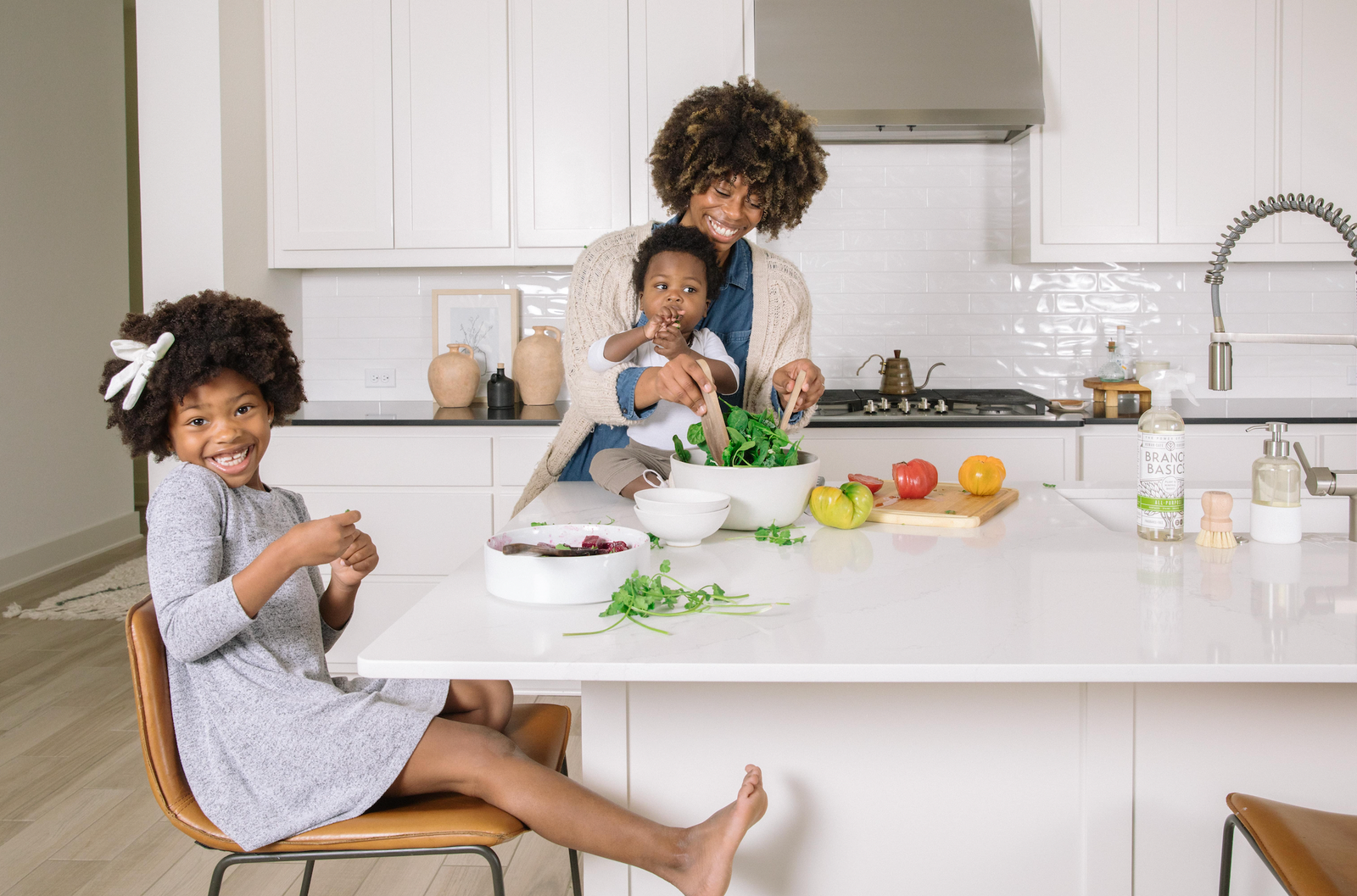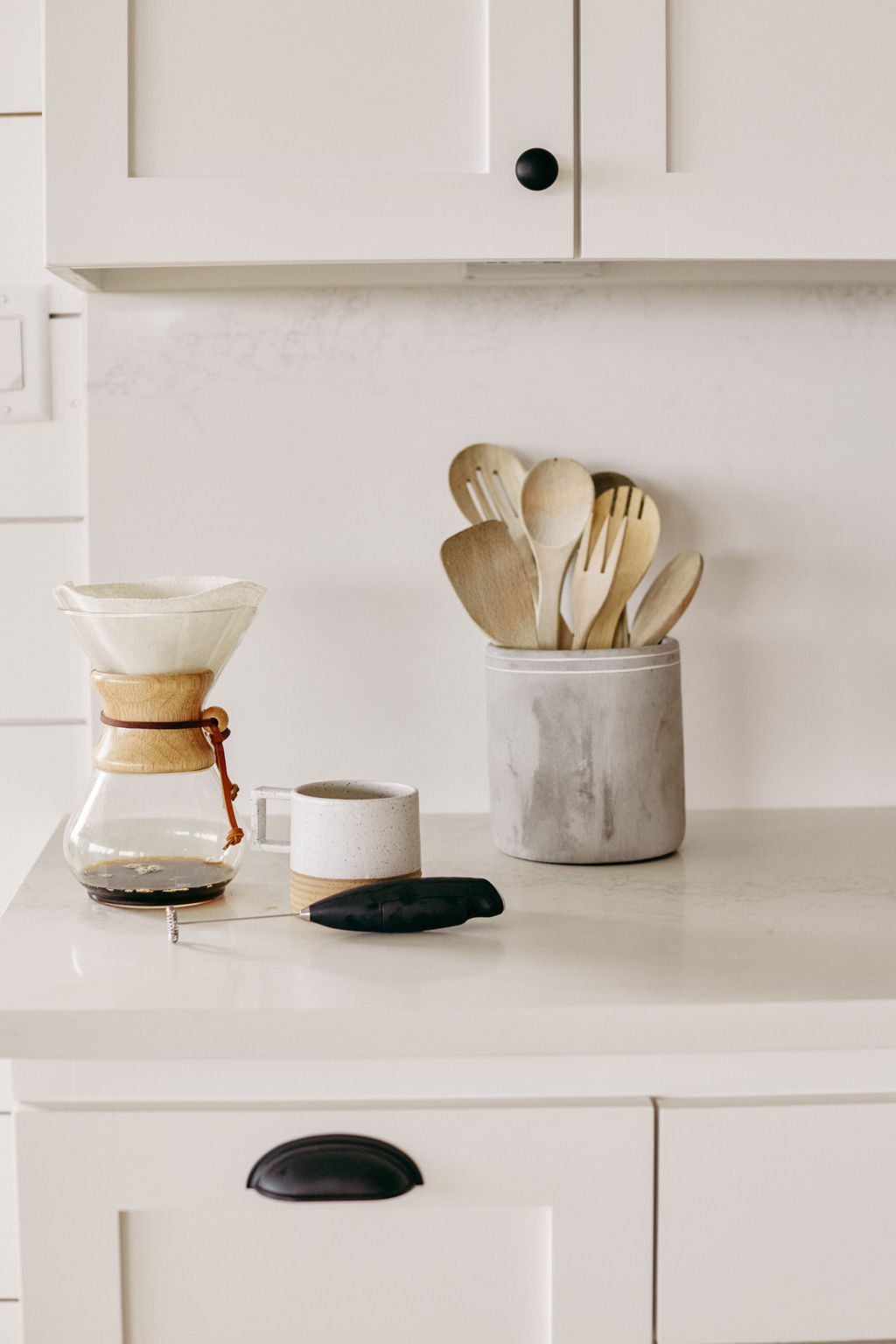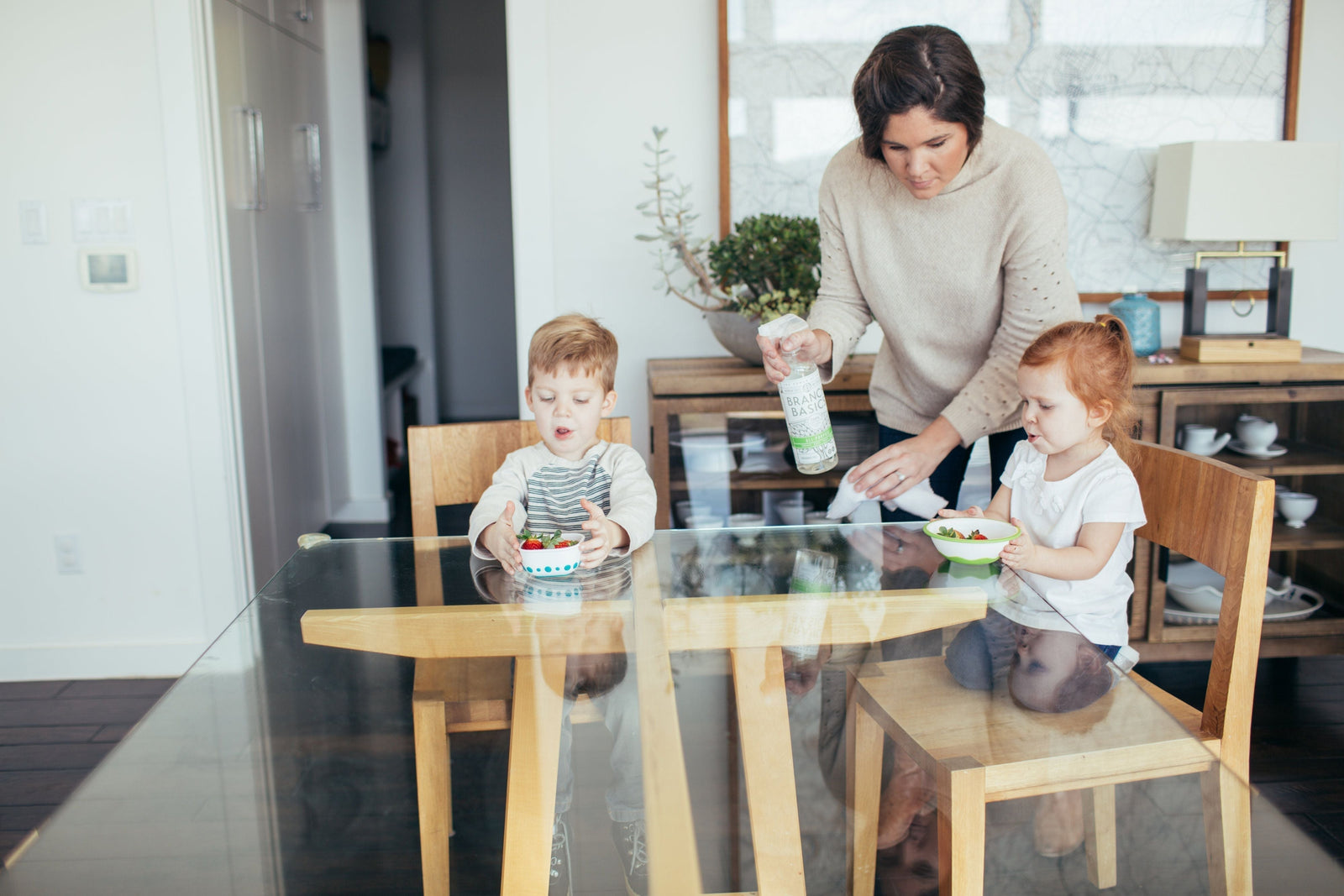How to Keep Produce Fresh Longer [Complete Guide]
![How to Keep Produce Fresh Longer [Complete Guide]](http://branchbasics.com/cdn/shop/articles/BranchBasics202100662_e3230512-c4be-4326-b53b-f713c972fa8c.jpg?v=1743446392&width=1600)
If you’re a health-conscious cook, then you know the value of investing in the highest quality, nutrient-dense foods.
For us, that means choosing organic, local, and/or naturally-grown/raised foods as much as possible and buying a lot of fresh fruits and vegetables.
Committing to healthy eating is an investment, both in terms of dollars and time.
Like any investment, you want to make sure you’re getting the most for your money, which is why it’s so important to learn how to store your produce properly.
Here are some helpful tips on how to keep produce fresher longer (without creating more waste from plastic bags, aluminum foil, etc.). Keep in mind there are effective alternatives.
Best General Produce Storage Tips
Before jumping into the basics of storing fruits and veggies, it’s important to make sure you’re prepped. Let’s take a look at some basic storage tips when it comes to maximizing the lifetime of your produce.
Meal Plan
This is a great way to prevent buying too much food, which leads to waste. Buy the freshest produce possible. Inspecting your produce before you buy it will save you tons of money and time as well.
Look for crisp greens, plump celery, stiff stalks of broccoli, firm fruits, zucchini, yellow squash, etc., mold-free berries, pineapple, and citrus, wrinkle-free tomatoes...you get the idea.
Avoid plastic bags when buying produce.
Bring your own cloth bags or choose paper bags, if available. If that’s not possible, remove the plastic as soon as you get home.
Plastic can leach toxic chemicals into food and is an environmental hazard. Thus, we recommend avoiding/removing it.
Preserve food
Preserve food longer by keeping the temperature of your fridge between 34 and 40 degrees Fahrenheit.
Buy an inexpensive thermometer for your refrigerator for easy monitoring.
Use non-toxic paper towels to help keep produce fresh!
Line crisper drawers before you add your produce. Fruits and vegetables release water when stored.
The paper towels absorb moisture, which can degrade your produce. It stays fresher longer and keeps the crisper drawer clean.
Replace the paper towels when you put in a new batch. Another option is to use cotton towels.
Avoid plastic contact with your food where possible.
Use reusable plastic free beeswax wraps to cover cut produce and preserve the life of your fruits and vegetables. Scroll down the page and watch videos here.
Use the right containers.
If you like pre-washing and prepping your fruits and veggies, we find they’re best stored in glass mason jars with BPA-free lids.
These simple, inexpensive, multi-purpose containers not only help preserve their freshness but also keep them visible so you don’t forget about them.
You can also reuse your glass pasta jars, sauerkraut containers, etc. and use them over and over again.
Reusing is always more sustainable than using disposables, or even recycling.
We also like GlassLock and Pyrex for storage containers.
Learn more in: Switching to Glass to Store Food and Drinks and Avoid BPA and Phthalate Exposure.
How to Store Vegetables in the Fridge
Whether you store produce in the fridge or on the counter, there are simple best-practices you’ll need to consider for different types of veggies.
Here are some of our favorite tips:
Get that produce in your crisper...but keep veggies and fruit separate.
Crispers were made to help maximize the life of most produce (some exceptions: potatoes, sweet potatoes, onions, winter squash, garlic, tomatoes).
However, some fruits produce ethylene gas that causes veggies to over-ripen.
Double your produce life! Designate one crisper for fruit and one for veggies.
Store greens in your paper towel/cloth lined crisper.
Layer paper towels/cloth to add a barrier to store different types of greens.
If your greens go limp, water them! Mixed greens, spinach, kale, chard, etc. can be brought back to life with a 15-30 minute soak in ice water.
Get creative with storing lettuce.
Store iceberg lettuce unwashed or washed, wrap in a paper towel, and store in reusable silicone bags (we like these because they’re easy to fill and to open and close).
Wash loose leaf lettuce, spin dry in a salad spinner, and store with a paper towel in the salad spinner, or in a sealable glass container.
For super shelf life consider vacuum packing lettuce in mason or glass jars.
What about pre washed greens? Read this and other articles to decide your answer.
Cabbage - for best results leave whole and unwashed for storage.
Green and red cabbage stay fresh in the crisper for four weeks or more!
Napa and Savoy cabbage are a little less durable but still stay fresh for a couple of weeks!
Storing Herbs
Store tender herbs like basil, parsley, cilantro, and dill in jars of filtered water on your countertop.
Treat like a fresh flower, give the stems a fresh cut and store upright.
For hardy herbs like rosemary, oregano, and thyme store dry in their clamshell container or rinse and wrap in a damp paper towel and store in the refrigerator.
Trim asparagus ends
Store them upright in a glass of filtered water in the fridge. The stems will drink up the water and keep the asparagus fresh and tasty. Wrap tops with beeswax food wrap.
Store potatoes and sweet potatoes in a cool, dark place
And with good airflow (not the refrigerator) and do not pre-wash.
If you have a dry basement, that’s a great spot. If not, you can place them in a box or paper bag (just take care not to overcrowd them).
Store onions and potatoes separately.
Potatoes will sprout and go bad faster if too close to onions.
Store carrots in sand.
One way to keep carrots fresh for months is to store in sand.
This is a great trick if you buy carrots in bulk or grow your own. Simply fill a container with sand and bury the carrots to maintain their crunch and flavor for months.
Remove tops from root vegetables before storing.
While we love those yummy colorful carrots with the green tops, we also know they’ll steal moisture from the carrot and make it go limp faster. Same goes for turnips, parsnips, beets, etc.
The greens are full of nutrients and should be eaten, but just stored separately!
Keep celery and carrots crisp by storing in purified water.
We like to pre-cut celery sticks and carrots for our kids and store them in glass mason jars filled with filtered water. It keeps the veggies super crisp and tasty.
Cauliflower has dark spots?
Cut them off, blanch it in boiling water, and freeze.
Store fresh ginger in a paper bag in your refrigerator.
To extend the life of ginger - try one of these freezing methods.
Store mushrooms in open paper bags.
Mushrooms will absorb moisture like crazy, so keeping them in a moisture-absorbing container, like a paper bag, will help extend their shelf life.
How to Keep Fruit Fresh
Next, let’s dive into how to store fruit to keep it fresh for your weekly meals:
Keep bananas away from your fruit bowl.
Their ethylene gas will over-ripen other fruits quickly. We keep ours a few feet away in a banana stand.
Pre-peel bananas for smoothies, nice cream, etc. and store in the freezer
Pre-wash berries in water and apple cider vinegar.
About 1 part vinegar to 3 parts water, dry well, and refrigerate.
The apple cider vinegar will naturally cleanse the berries and extend their shelf life. If you can’t do the vinegar mixture, do not pre-wash them.
Avocados ripe before you’re ready?
Put them in the fridge.
Not ripe enough? Store them with bananas, the ethylene gas will help them ripen up quickly (super-quick if you put them in a bag together overnight).
Keep apples nice and chilly.
Apples can be kept for weeks if stored in the fridge vs. the countertop.
Let your fruit breathe.
Consider a wire fruit basket. This allows for better airflow which cuts down on the build up of ripening ethylene gas.
The Vast Implications of Proper Food Storage (beyond your pocketbook)
According to the USDA, America alone wastes 30-40% of its food supply
How do we work together to change this sobering statistic?
We start at home by meal planning and storing our food properly.
This seemingly small step can have a huge ripple effect on our individual budgets and lifestyles---yes, but also on the well-being of those in need (grocery stores and farmer’s markets will donate unsold food to charities, and if we consume less by wasting less, there’s more for everyone) and on the health and future of our planet as a whole.
Waste not, want not...timeless advice for healthier people and the planet.
To learn more about maintaining a clean and waste-free kitchen, read the Branch Basics guide on 7 Tips for Fast, Real-Food, Home-Cooking. Or, visit our #TosstheToxins page to learn more about creating a human-safe, natural home.
Categories

Allison Evans
Allison has dedicated herself to helping others reap the benefits of clean living. She, along with her husband and two daughters left Houston for the country life as she heals from a recent mold exposure and diagnosis of chronic Lyme disease. Follow her story on our Instagram and read more about her Journey to Fertility.








